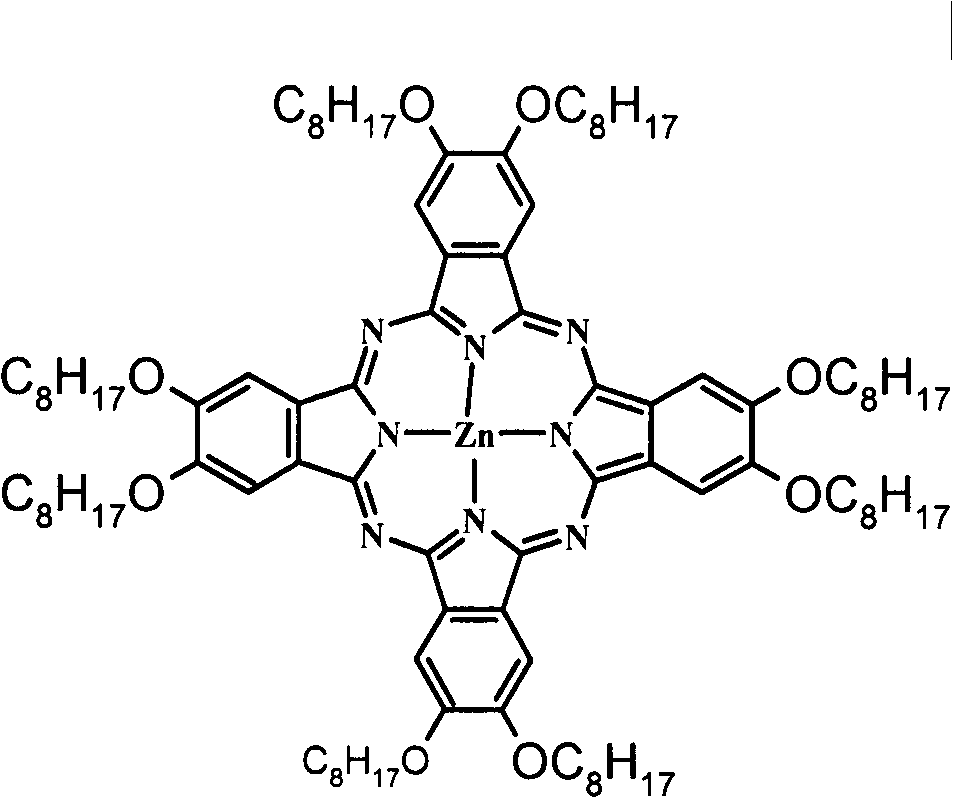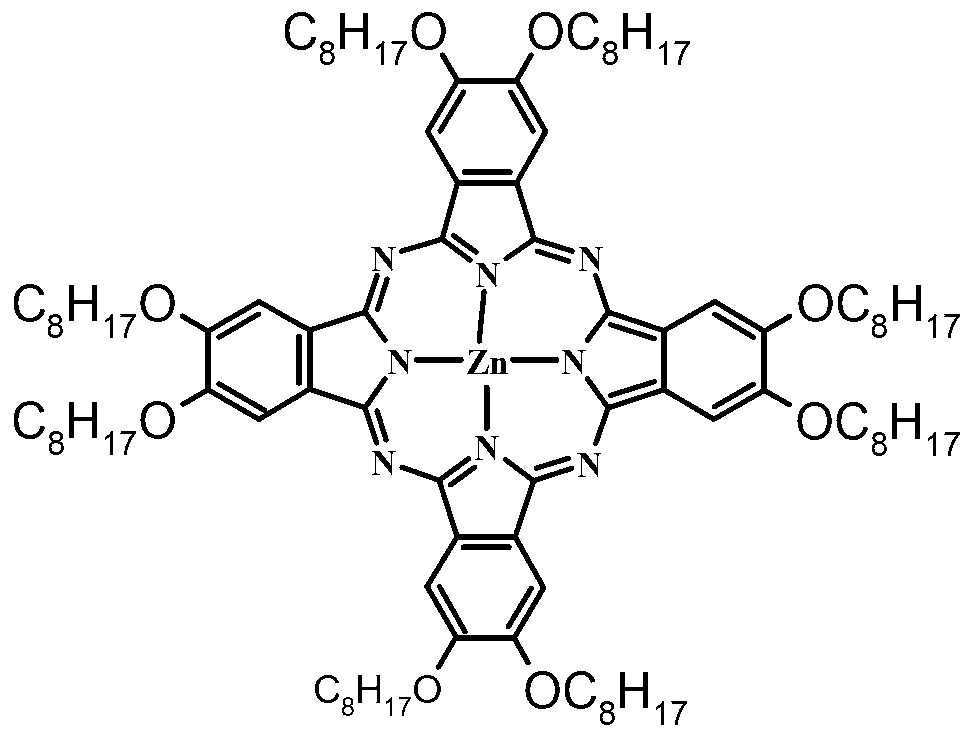Application of zinc phthalocyanine complex as ink in micro-contact printing
A technology of micro-contact printing and zinc phthalocyanine, applied in printing, application, ink, etc., to achieve the effect of exquisite patterns
- Summary
- Abstract
- Description
- Claims
- Application Information
AI Technical Summary
Problems solved by technology
Method used
Image
Examples
Embodiment 1
[0023] The polyethylene terephthalate substrate was soaked in 1mol / L sodium hydroxide at 70°C for 30 minutes, then soaked in 1mol / L acetic acid at 70°C for 15 minutes, then washed with water, and dried in vacuum at 60°C. Dissolve octa(octyloxy)-zinc phthalocyanine in propanol at a concentration of 0.1 g / L. Soak the PDMS stamp in octa(octyloxy)-phthalocyanine zinc ink for 30s, take it out and put it in N 2 Dry in air flow for 30s. Cover the PDMS stamp coated with octa(octyloxy)-zinc phthalocyanine ink on the carboxylated substrate, and press lightly for 5s to transfer the PDMS stamp pattern to the surface of the substrate. Soak the patterned substrate in 0.1g / L PdCl 2 Put in the solution for 10 seconds, take it out and place it in an electroless copper plating solution consisting of 2wt% copper sulfate, 11wt% sodium potassium tartrate, 3wt% sodium hydroxide, 45wt% formaldehyde and 49wt% distilled water for 3 minutes. Exquisite metallic copper patterns can be obtained on the ...
Embodiment 2
[0025] The polyethylene naphthalate substrate was soaked in 3mol / L sodium hydroxide at 70°C for 30 minutes, then soaked in 3mol / L acetic acid at 70°C for 15 minutes, then washed with water, and dried in vacuum at 60°C. Dissolve octa(octyloxy)-zinc phthalocyanine in propanol at a concentration of 1 g / L. Soak the PDMS stamp in octa(octyloxy)-phthalocyanine zinc ink for 30s, take it out and put it in N 2 Dry in air flow for 30s. Cover the PDMS stamp coated with octa(octyloxy)-zinc phthalocyanine ink on the carboxylated substrate, and press lightly for 5s to transfer the PDMS stamp pattern to the surface of the substrate. Soak the patterned substrate in 0.1g / L PdCl 2 In the solution for 10 seconds, take it out and place it in an electroless copper plating solution consisting of 2wt% copper sulfate, 11wt% sodium potassium tartrate, 3wt% sodium hydroxide, 45wt% formaldehyde and 49wt% distilled water for 5 minutes. Exquisite metallic copper patterns can be obtained on the polyethy...
Embodiment 3
[0027] The polyimide substrate was soaked in 5mol / L sodium hydroxide at 70°C for 30min, then soaked in 5mol / L acetic acid at 70°C for 15min, then washed with water, and dried in vacuum at 60°C. Dissolve octa(octyloxy)-zinc phthalocyanine in propanol at a concentration of 0.5 g / L. Soak the PDMS stamp in octa(octyloxy)-phthalocyanine zinc ink for 30s, take it out and put it in N 2 Dry in air flow for 30s. Cover the PDMS stamp coated with octa(octyloxy)-zinc phthalocyanine ink on the carboxylated substrate, and press lightly for 5s to transfer the PDMS stamp pattern to the surface of the substrate. Soak the patterned substrate in 0.1g / L PdCl 2 In the solution for 10 seconds, take it out and place it in an electroless copper plating solution consisting of 2wt% copper sulfate, 11wt% sodium potassium tartrate, 3wt% sodium hydroxide, 45wt% formaldehyde and 49wt% distilled water for 5 minutes. Exquisite metallic copper patterns can be obtained on the polyethylene terephthalate subs...
PUM
 Login to View More
Login to View More Abstract
Description
Claims
Application Information
 Login to View More
Login to View More - R&D
- Intellectual Property
- Life Sciences
- Materials
- Tech Scout
- Unparalleled Data Quality
- Higher Quality Content
- 60% Fewer Hallucinations
Browse by: Latest US Patents, China's latest patents, Technical Efficacy Thesaurus, Application Domain, Technology Topic, Popular Technical Reports.
© 2025 PatSnap. All rights reserved.Legal|Privacy policy|Modern Slavery Act Transparency Statement|Sitemap|About US| Contact US: help@patsnap.com


